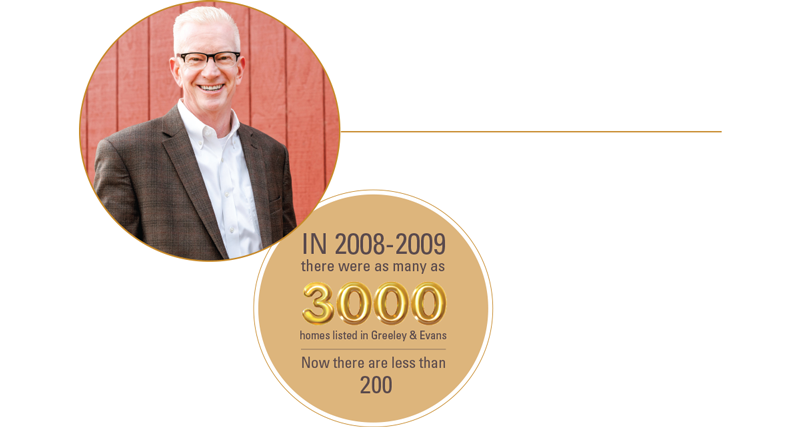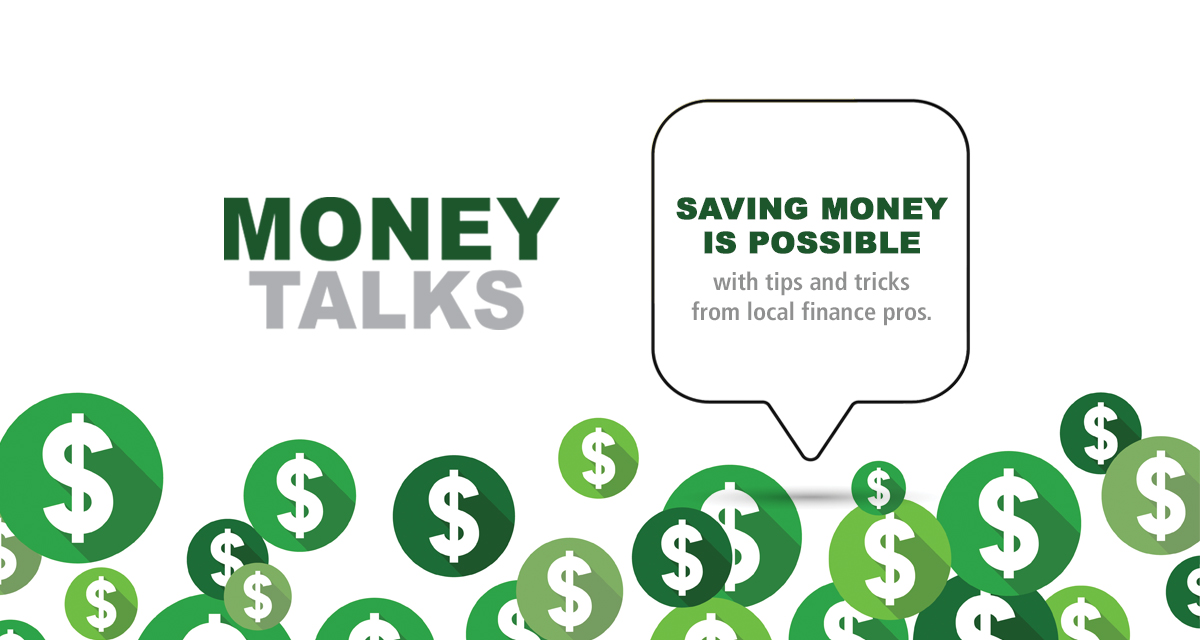If the last few years were a party for real estate brokers and others in the housing industry, it’s been six months since Dad turned on the lights and shut the music off.
Around Easter, the feds, aka Dad, raised interest rates by a lot all at once, in an attempt to temper record-high inflation, and the party came to a screeching halt.
“That certainly put the brakes on what was a white-hot real estate market,” says Brandon Wells, the president and CEO of The Group in Fort Collins.
The housing market in 2023 continues to nurse a hangover from the rager that began around the start of the pandemic and ended when the feds’ first salvo raised interest rates by three-quarters of a point last spring. Kelly Moye, a Realtor with Compass Real Estate who works primarily in the Northern Colorado and Boulder County regions, calls the hangover “gridlock.” Those interest rates have spooked buyers into staying in their homes even if they are unhappy with them, she says, and the few buyers who want to move don’t have many options.
“This year, there are no houses to sell and no buyers to buy them,” Moye says. “No one is doing anything. It’s as quiet as a mouse.”
Moye is also the spokeswoman for the Colorado Association of Realtors, so that means sometimes talking about bad news for her industry, and here’s the biggest: Home sales dropped 25 percent across Northern Colorado in 2022 over 2021, and that’s even with a strong first quarter, before the feds raised interest rates.
But it’s not all bad. Housing prices remain stable and should stay that way. Wells even predicted a 2 percent growth, at most, for prices in the Northern Colorado region. That seems low, even crazy low. Compare that to the last two years, when prices not only skyrocketed, offering the full asking price would move you to the bottom of the piles of offers sellers were receiving from buyers fighting like stray dogs over table scraps. But any gain could draw envy from sellers in other parts of the country, where prices are expected to drop, sometimes drastically. Wells, in fact, says Northern Colorado’s housing market may be different than what you might be hearing nationwide.
“It was universal across the country these last couple years,” Wells says of the housing market. “That’s dramatically going to change. The health of housing markets will be drastically different. Real estate will return to being hyper local. I even think certain areas will perform differently in Northern Colorado as well.”

Brandon Wells, President and CEO, The Group, Fort Collins
Balance for buyers
The comparatively high interest rates have changed the market so drastically that it almost—almost—seems normal again, says Steve Baker, the managing broker and Realtor for Sears Real Estate in Greeley. Here’s what he means by that: People are moving because they have to, not because they want a flower garden, a bigger basement or bedrooms for their trio of border collies.
“The listings coming on are necessity based,” Baker says. “They have to move to buy a bigger home because of kids, or it’s an estate sale, or a divorce, or they are changing jobs. It’s not people whimsically saying, ‘Let’s see what we can get.’ Sellers now are motivated to sell and buyers have a bit more power to negotiate.”
In the last couple of years, negotiations over a home, if you want to call them that, resembled the kind of options presented to prisoners in San Quentin. But now buyers are asking sellers for $10,000 off listing prices to pay down the high interest rates, Baker says, instead of paying tens of thousands over the listing price.
Before sellers start playing the world’s smallest violin, this hardly means they’re hurting, Baker says. But buyers now know when a home is overpriced, as it usually sits on the market a bit. Quite frankly, during the party, it didn’t matter, but buyers now are filing aggressive offers, forcing sellers to drop a bit.
“They are still getting a higher price than they were three or five years ago,” he says of sellers. “It just may not be where it was at the highest point last year.”
Buyers are doing better because they don’t have as many opponents to fight off. Interest rates do more than spook buyers: They also cut down their numbers. Those looking for affordable homes, which Baker calls those priced for less than $400,000, are especially hurt by rates that were as high as 7.5 percent. Rates were half that a year ago: Baker’s son bought a house for 3.25 percent in February 2022.
“Many people do not qualify anymore,” Baker says. “When the rates were 3.5 percent, it was great, but at 7 percent, they don’t qualify.”
It’s not just interest rates either. Those interest rates are higher, remember, because of inflation. Inflation affects everything, from groceries to cars to equipment for your kids’ soccer games, Wells says. The discretionary income, or the money people might save to, say, buy a house, has evaporated.
“The high interest rates really stripped away affordability,” Wells says. “The cost of goods and services, and the high interest rates, are taking money out of families’ pockets.”

Kelly Moye, Realtor, Compass Real Estate
Strong and stable
Some are expecting home prices to fall 10-15 percent this year, but Wells doesn’t see that happening here, and some of that is because of positive things. It is partly because of a population of young, skilled millennials staying here and moving here. Millennials, he says, are reaching their mid-30s, and that will bring 20 million home buyers into the national market this year, based on the fact that 36 is the median age for buying your first home.
Northern Colorado also remains strong, thanks to a low unemployment rate, which Wells uses as the best indicator of the housing market. Larimer County even has higher growth in employment relative to the state, Wells says, which is why he thinks that the county will do better than Weld, which has lagged a bit and can be reliant on industries such as oil and gas instead of the technology powering Larimer jobs.
“Nationally. I still strongly believe Northern Colorado is well positioned in housing,” he says. “The impact on homeowners is very minimal in comparison to other parts of the country.”
But stable prices are also because of simple supply and demand. Our inventory will keep the demand for houses high because it’s just that low. Homes aren’t getting built because skilled labor is short, and the price of materials keeps going up.
This is why Baker isn’t too worried about the market crashing. He’s lived through a market crash, back in 2008-09, when he had to drain most of his life savings to survive. Back then, there were as many as 3,000 homes listed in Greeley and Evans. Now there are less than 200.
“We were all caught off guard in 2008,” he says. “We won’t see that. But it’s just a different marketplace than what we’ve had.”
Baker isn’t happy about the low inventory. He calls it a “lack of abundance” that will lead to agents struggling and others in the industry facing layoffs. But it makes it unlikely that the market will collapse and brings a little more balance back to buyers.
Baker also isn’t pleased about the feds jacking up interest rates so quickly, a strategy that he says targets the housing industry. Housing is married to the economy—look at what happened in 2008, when the market crashed and the economy nearly went nuclear as a result—and it’s an industry, not just brokers, that will suffer. The fallout from that could affect dozens of other professions and make the inventory problem worse, as builders are hesitant to invest in new construction when the market is unfriendly to buyers.
“I don’t want to get too political,” Baker says. “But this will impact all kinds of industries and just continue with that inventory deficiency we have right now.”
Indeed, sellers don’t want to give up their homes because they’re too attached to their interest rate of less than 3 percent and aren’t keen to doubling that.
“We call this being stuck,” Moye says. “Homeowners who want to sell and buy a bigger home either can’t afford it or can’t deal with it.”

Steve Baker, Managing Broker and Realtor, Sears Real Estate, Greeley
Consumers will adjust
Moye compares the interest rates to the pandemic (and, in many ways, it’s having the same effect on buyers’ willingness to get out there). Consumers, at first, were resistant to wearing masks, but as time went on, they got too used to it that the tiny, angry minority who refused were met with derision.
“Consumers need time to process,” she says. “But they adapt pretty quickly.”
In fact, at press time, in early January, rates were already creeping down, as inflation started to creep down along with it.
“When they do come down, even a little bit, buyers will start to buy,” Moye says. “I don’t think it will take long.”
In fact, it’s possible that the low inventory that appears to be stabilizing the local market could destabilize it again. Low supply causes a higher demand.
“When rates come down, there will be a FLOOD of people on the market,” Moye says. “Buyers will start to buy, and the wheel will go again.”
The party may return once again. But even real estate brokers may not want it to turn into the rager it was.
“I think you could see rates in the mid-5s again,” Baker says, “and if that does happen, with higher demand and no inventory, it will be back to a battlefield.”
_______________________________________________________________________________
Dan England is NOCO Style’s assistant editor, and a freelance journalist based in Greeley.







